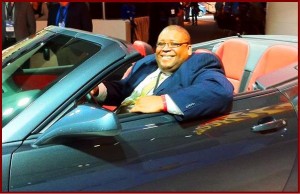
NHTSA wants owners to pay to make sure replaced airbags are genuine. Sometimes airbags are missing entirely.
The U.S. Department of Transportation’s National Highway Traffic Safety Administration has published a consumer “safety advisory” to warn vehicle owners and repair shops about the dangers of counterfeit Chinese air bags. NHTSA said it has become “aware” of a problem involving the sale of counterfeit air bags for use as replacement parts in vehicles that have been involved in a crash. Law Enforcement officials recently discovered a counterfeit airbag ring in North Carolina. The arrests lead to the confiscation of more than 1,500 counterfeit airbags for a variety of manufacturers and vehicle models. (There’s also another airbag problem lurking because of the high price of O.E. replacement airbags. In 2009, NHTSA looked at five years of fatal accident data and discovered that airbags were missing in 18% of crashed vehicles that had an airbag blow up in a previous accident.)
The Chinese-made air bags are said to look identical to certified, original equipment parts—including the logo or branding of major automakers, but NHTSA testing shows consistent malfunctioning, ranging from failure of the air bag to explode, to the expulsion of metal shrapnel during deployment. NHTSA, however, said it is not aware of any deaths or injuries connected to counterfeit air bags.
NHTSA cited some vehicle makes and models where counterfeit air bags are available, and claims this issue affects less than 0.1% of the U.S. vehicle fleet. Since there is no reliable or regulated tracking of replacement parts – long a weakness in the regulatory system – the size of the actual problem is unknown. This, according to safety advocates, represents the latest example, arguably in my view, of NHTSA not being effective in its primary purpose of promoting safety as part of the Department of Transportation’s huge, some say bloated, $80 billion annual budget. Motor vehicles are responsible for 95% of the nation’s transportation deaths, but only 1% of the Transportation budget. Morever, NHTSA has only 125 engineers working on automotive safety. Another obvious question lingers – why this announcement now?
NHTSA claims that only vehicles, which have had an air bag replaced within the past three years by a repair shop that is not part of a new car dealership, may be at risk. No other details were released about the problem or whether it was automakers who blew the whistle. Worse, NHTSA says that owners of vehicles with air bags replaced by a repair shop that is not part of a new car dealership within the past three years or who have purchased a replacement air bag online should contact a call center that has been established by their auto manufacturer to have their vehicle inspected at their own expense and their air bag replaced, if necessary. The full list of call centers and additional information are available at www.SaferCar.gov.
“We expect all motor vehicle equipment to meet federal safety standards — and air bags in particular play a central role in keeping drivers and passengers safe in the event of a crash,” said NHTSA Administrator David Strickland.
Strickland, a political appointee of the Obama Administration, is notable in my experience for making campaign speeches on taxpayer-funded junkets and not promoting auto safety. (See NHTSA Administrator Strickland Visits NAIAS Show Promoting Jobs, Not Safety? The Endless Campaign Continues). Let me be clear here, NHTSA is paid by taxpayers to promote safety, not jobs, even if it is the political message of the moment. Maybe Strickland is now realizing that.
NHTSA, in a statement, said it is currently “gathering information” from automakers about their systems for verifying the authenticity of replacement parts and is working with the industry to make the driving public aware of the potential safety risk posed by counterfeit air bags. The hapless safety agency says it will continue to monitor consumer complaints, police accident reports, and other sources for additional information.

